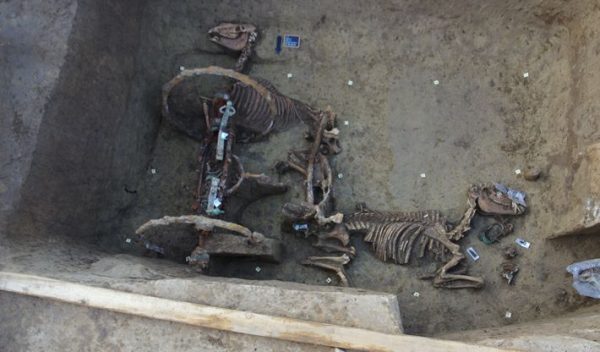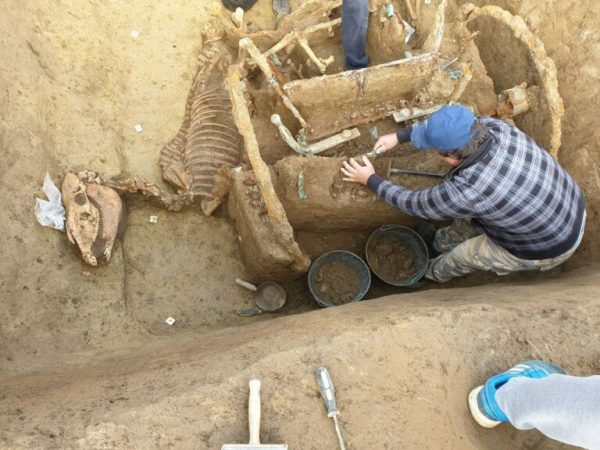Archaeologists in Croatia have recently made a remarkable discovery at the Jankovacka Dubrava site near the village of Stari Jankovci, close to the city of Vinkovci in eastern Croatia.
The find consists of the fossilized remains of a Roman chariot, accompanied by two horses, suggesting that it was an integral part of a burial ceremony. Led by a team from the City Museum Vinkovci and the Institute of Archaeology from Zagreb, this excavation has shed light on ancient burial practices in the region.

The unearthed burial chamber is believed to have belonged to an exceptionally affluent family. The presence of the chariot and two horse remains in the same resting place indicates a burial tradition reserved for the elite of society.
This practice was common among influential families who played pivotal roles in the political, social, and economic spheres of the Pannonia province during the Roman era. In the southern Pannonian Basin, burial under tumuli, ancient burial mounds, was considered a significant ritual, highlighting the prestige of the deceased.

Dating back to the third century AD, the bones are currently being analyzed to determine the exact age of the remains. This investigation aims to provide a comprehensive understanding of the family that was interred at this site approximately 1,800 years ago.
Marko Dizdar, the head of the Institute of Archaeology, outlined the next steps, which include the restoration and preservation of the artifacts, followed by an in-depth examination of the findings. The researchers anticipate that in the coming years, a wealth of information regarding the ancient family will come to light.

Of particular interest to the experts are the horses themselves and their origin. The team is eager to ascertain whether the horses were bred locally or brought in from other regions of the Roman Empire.
This detail could offer valuable insights into the wealth and prominence of the family. To gather more insights, the researchers plan to collaborate with local and European institutions, further enriching the understanding of this archaeological discovery.





